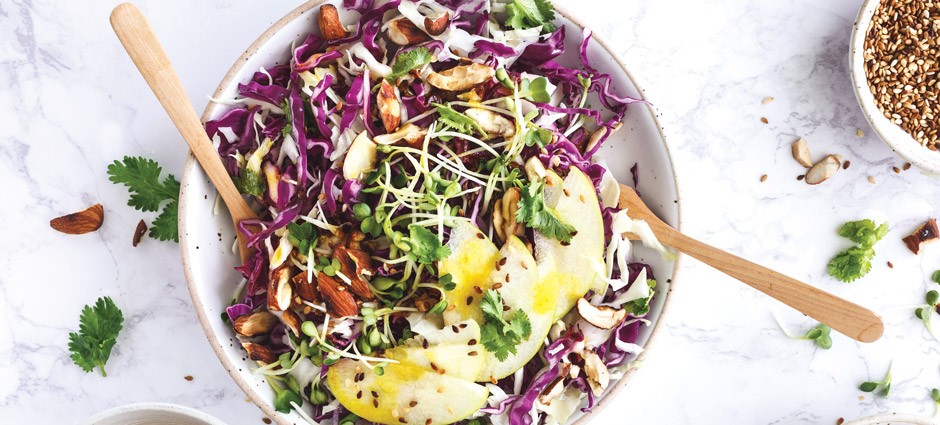In his new book The Vegan Starter Kit (Grand Central Life & Style, 2018), New York Times best-selling author and faculty member of the George Washington University School of Medicine Neal Barnard, M.D., explains the why and how of converting to a plant-based lifestyle…and how easy it can be.
You are recognized as a leading medical authority on plant-based eating. Please share some history on your work and research in this area.
I have to confess: My early life didn’t prepare me for this. I grew up in Fargo, N.D., in a family of cattle ranchers. I was helped when my father got out of it and went to med school, which paved the way for me. My early research at National Institutes of Health (NIH) was on test diets for diabetes. My team discovered that a vegan diet was much simpler for patients to follow than the conventional limiting-calories-and-carbohydrates approach, and that it was more effective. So we decided: to heck with the other approaches, and we applied vegan to diabetes, as well as treating other issues like cholesterol, blood pressure, menstrual pain and rheumatoid arthritis.
Why did you decide to write this book?
I’ve written many books, most of which are big enough to prop open a door. So, my goal was for people to be able to read this book in 45 minutes. I wanted to offer just enough information to give people confidence on how they can jump in on a healthy diet. I’ve organized the book to allow readers to make progress rapidly. I aim to answer the most common questions and address real-life situations when trying to eat plant-based, such as grocery shopping, being on a budget, following a certain diet like gluten-free and eating out at restaurants. I’ve also compiled tried-and-true recipes, with easy ingredients and instructions.
What do you see as the biggest roadblocks to eating vegan?
People imagine that it’s hard. On a scale of 0 to 10, trying to quit smoking is a 6 in difficulty, whereas changing to a plant-based diet is a 1 or 2. About 15 or 16 years ago, one of my researchers who had diabetes admitted that converting to vegan for his health was much easier than he would have thought. Instead of meat chili, he made bean chili, for example. Once on the diet, his issues with diabetes flat-out disappeared. In my studies, my team has concluded it takes about four to five weeks for people to feel comfortable and solid converting to a vegan diet.
Another roadblock is when you’re on the road or traveling. When you have to eat at restaurants, think international: Italian pasta, Mexican burritos, Japanese vegetarian sushi, multiple vegetable Chinese dishes. There are options.
Could you offer a few starter tips for eating more vegan?
Take seven days and, while not taking anything out of your diet, write notes about which foods you might want to try that are free of animal products. If you use dairy milk, think about buying almond milk instead. At the sandwich shop, consider an option with all kinds of vegetables, but no meat or cheese. And so on. The idea is to familiarize yourself with all the vegan things you already like and to think about trying some new things.
Over the next three weeks, eat plant-based foods you identified that you like and rule out animal products completely. Incorporate transition foods. Instead of a hot dog, eat a veggie dog. Instead of sausage, veggie sausage. Instead of dairy, nut or soy milk and cheese. At the end of three weeks, you’ll discover you’re physically healthier: improved weight loss, better digestion and sleep, and more energy. Your tastes will also be changing.
Looking for delicious vegan recipes?Live Naturally partnered with Vegan Fusion to create a vegan recipe ebook, filled with 21 of the top recipes from our vegan recipe contest.

